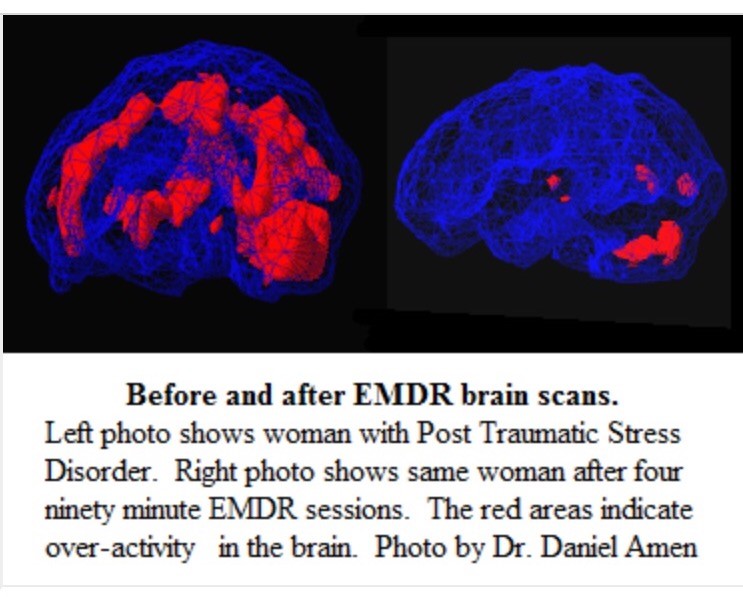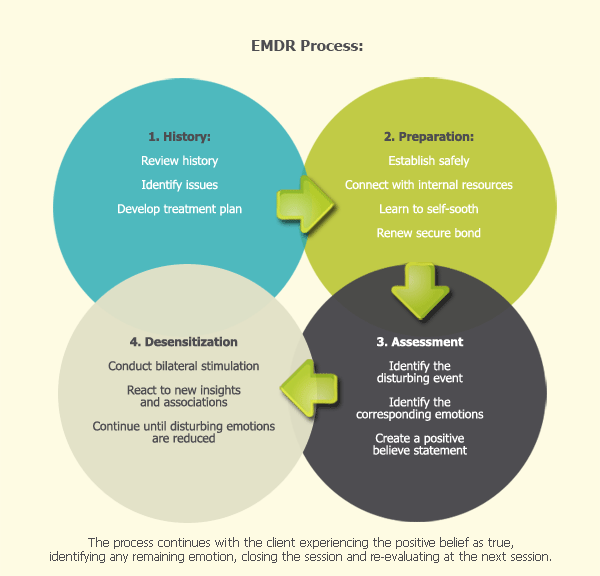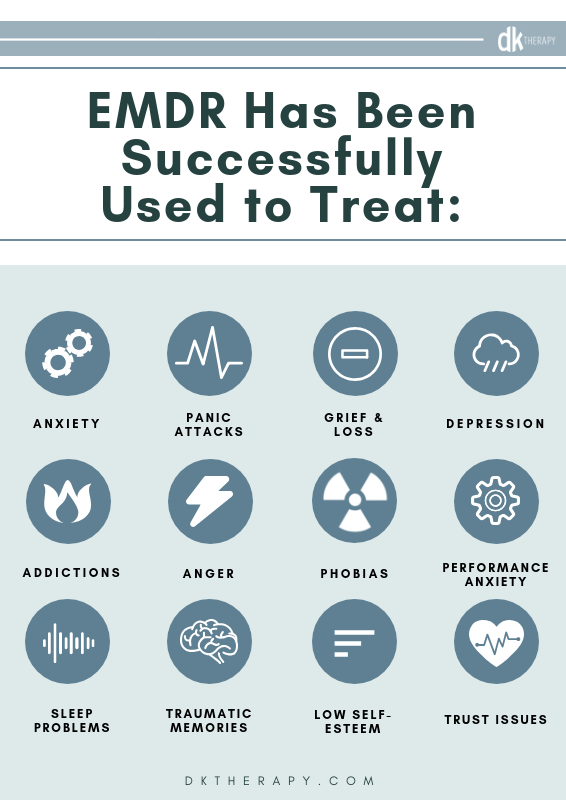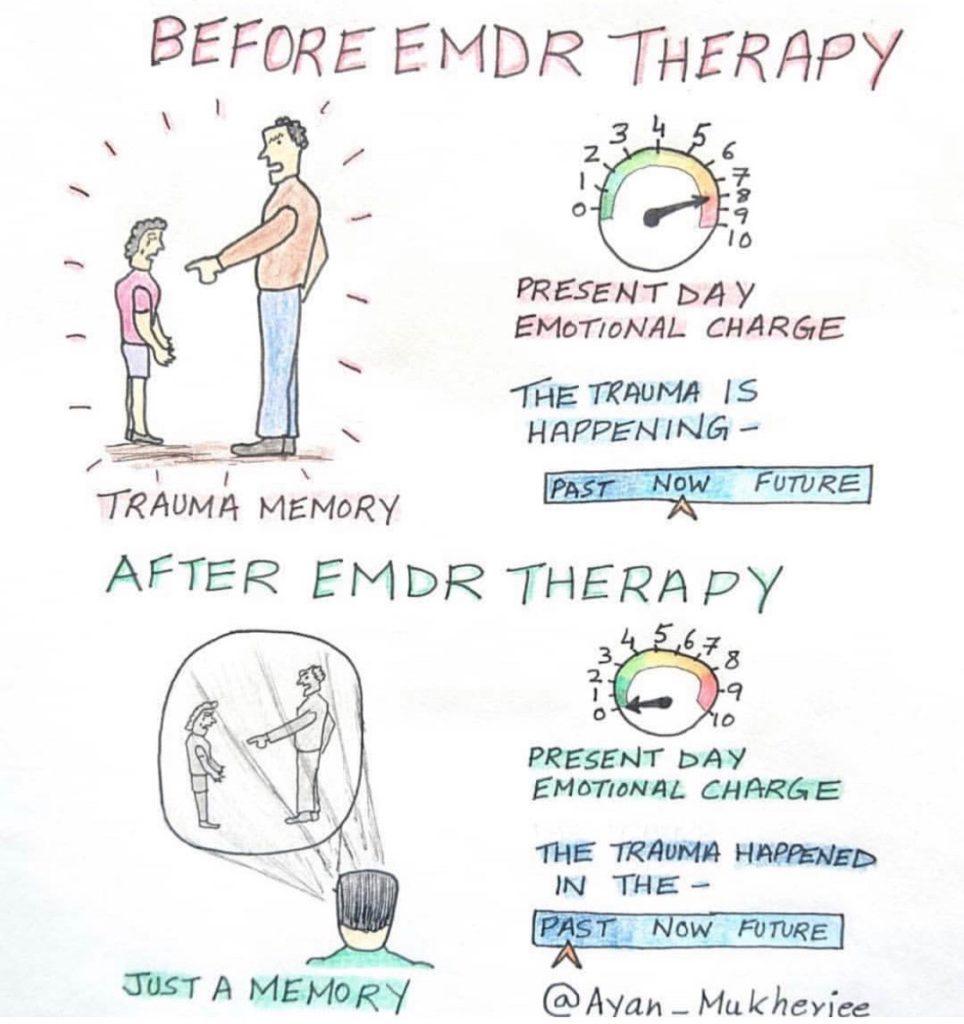At this point your counselor will guide you through a directed and controlled process of holding the image in your mind while undergoing bilateral brain stimulation. You’ll be encouraged to “put” the memory in a “safe place” – for example, an imaginary box – where you can “watch” it as an objective observer, noticing how you think and feel as the treatment proceeds.
This process will be repeated every other week until you and your therapist are satisfied that the desired results have been achieved. This may take up to 10 sessions altogether, but it could require as few as three or four.
The goal of the procedure is not to change the memory but to rewire your reaction to it so that its power over you is broken. During and after the treatment you may experience vivid dreams and heightened emotions, but there is no danger of “trauma flood” as long as you are working with a licensed, certified therapist who is properly trained in the use of the appropriate protocol.
 Smith
Smith 



